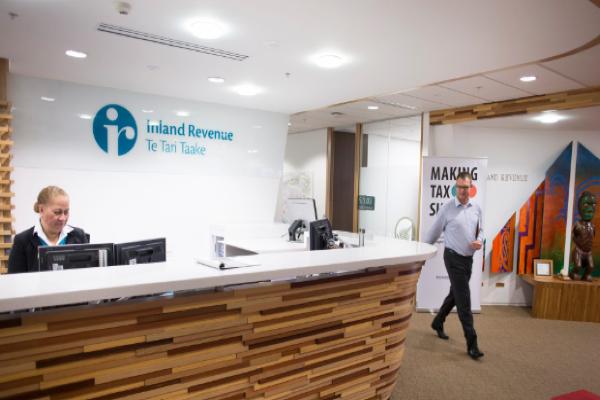Published on the 19/07/2017 | Written by Donovan Jackson

Why bureaucratic job cuts are good news for all citizens…
Regardless of how you feel about the taxman, it seems harsh to dance on the graves of the several hundred IRD staffers who will soon find themselves out of work. But, while there can be no joy at the prospect of many people being released from their jobs, the downside for up to 1500 people is offset by an upside for hundreds of thousands of taxpayers. The many benefit while the few will suffer at least some short-term pain.
It is at least in part owing to the march of technology that these jobs are being automated away as the IRD continues to roll out its $1-billion modernisation of the tax system. While the IRD said it expected to cut 1500 jobs between 2018 and 2021, reducing the workforce by 25 to 30 per cent, the Public Service Association has said ‘up to 4,000’ employees could be affected.
The transformation plan is part of a $1 billion plus modernisation of the tax system and the biggest change to the system in 25 years. Presenting at the recent CIO Summit, the man in charge of the IRD’s technology Gary Baird outlined how: “We work in an industry which isn’t being disrupted, but we’ve taken it upon ourselves to disrupt our own industry,” he said.
The introduction of new systems is further moving the tax authority from the limitations of paper-based systems, which, said Baird, have already undergone ‘heavy automation’ since the 1990s. “Now we’re connecting the dots and becoming part of an ecosystem along with banking and other information systems for real time processing. We want tax to fit seamlessly and easily into people’s lives. Most people want to pay their fair share of tax, so we want to make that as simple as possible.”
Just like any business which seeks to delight its customers, the benefits of convenience, ease and speed are created through intelligent systems which rely less on people shuffling paper and more on automation.
Baird told delegates at the Summit that achieving its goals of efficiency and performance will include applying the ‘dark arts of advanced AI and BI’. “We want to automate as much as we can and close the tax gap [that is, identify and target delinquents]. We’re looking at what information we need to do that, and how, whether it is a data lake or pond or whatever. When we get the right information to answer complex questions, we can enable that 95 percent of the population who just want to pay tax and have nothing further to do with us, and increase the focus on that other five or ten percent.”
Mass job losses are never pleasant. Fears around automation and its effects on employment are real; however, bear in mind ‘that which is seen and that which is unseen’. When hundreds of jobs go in an instant, as is the case when Cadbury’s announced the closure of its Dunedin plant, it is seen. When IRD announces that 1500 people may have to find alternative employment, that too is seen.
What is relatively – or even completely, as far as media attention is concerned – unseen is when a small software developer hangs out its shingle and hires one or two people. Or when established, growing companies (which may or may not have skills shortages) scour LinkedIn for new hires and steadily expand their headcount with high paying jobs.
There is one more comforting fact. Despite the enormous waves of automation, digitisation, mechanisation and acceleration of efficiency which has taken place in the last twenty years, all of which benefits people, employment figures today are higher than those of the 1980s. While some believe the sheer pace of technology development makes it different this time, history trumps sentiment as an indicator of the future.
That may be cold comfort for affected IRD employees, but it remains good news for taxpayers everywhere.
As Baird said for the IRD: “This is your tax system. We are hugely focused on our customers and doing the right thing for New Zealand and New Zealanders.”



























